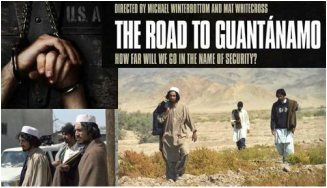 This docu-drama illustrates human rights abuses in the war on terror This docu-drama illustrates human rights abuses in the war on terror Tags: crime/law/deviance, government/the state, prejudice/discrimination, race/ethnicity, religion, war/military, human rights, muslim, racism, rendition, war on terror, 61+ mins Year: 2006 Length: 1:29:43 Access: YouTube Summary: The Road to Guantánamo is an "award-winning, intense, political, docu-drama about the Tipton Three, a trio of British Muslims who were held in Guantanamo Bay for two years until they were released without charge." Just days after 9/11, the three men traveled to Pakistan to attend a wedding. They crossed the border into Afghanistan at the same time that the US began military operations there, and after a series of missteps, they were left stranded. They were captured and transferred to the US military, who had mistaken them for Taliban fighters, and sent them to Guantanamo Bay Naval Base. The Tipton Three were exposed to harsh interrogation techniques but never charged, and eventually were released in 2004. A compelling feature in the film is the combination of first person narratives by the three you men, Ruhal Ahmed, Asif Iqbal and Shafiq Rasul, who appear as themselves in a talking head format alongside dramatic reconstructions of their actual experiences. For example, the film conveys a sense of what it feels like to experience noise bombardment and the 'futility torture' techniques where music is played (e.g. Metallica, James Taylor) to prisoners at deafening volumes in dark rooms. The video can be usefully paired with an article by Suzanne Cusick (2008), “'You are in a Place that is out of this World ...": Music in the Detention Camps of the 'Global War on Terror.'" For a similar account of torture techniques used in the US war on terror at Guantanamo Bay, see this news clip featuring an interview with Muhammad Saad Iqbal Madni. Submitted By: Les Back
2 Comments
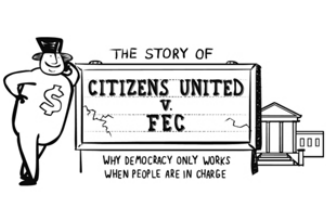 Citizens United v. FEC's impact on US democracy Citizens United v. FEC's impact on US democracy Tags: capitalism, corporations, crime/law/deviance, government/the state, politics/election/voting, campaign financing, citizens united v. federal election commission, democracy, power elite, supreme court, 06 to 10 mins Year: 2014 Length: 8:50 Access: YouTube Summary: This short video created by The Story of Stuff Project explores the relationship between wealth and political power, and examines whether we can speak of democratic elections in the United States. As the video points out, Americans have lost power in their democracy because of modern corporations' single-minded focus on maximizing profits, which have rapidly grown. Although the government can, and should, intervene by setting ground rules to protect society and keep things safe and fair, the reality of the current situation is that corporations, rather than people, write the rules. With Citizens United v. Federal Election Commission (FEC) in 2010, the Supreme Court decided that it is unconstitutional to put any limit on corporations’ financial contribution to elections because it violates free speech (this also invalidated part of the McCain-Feingold Campaign Finance Reform Law). As a result of this decision, corporations can now spend unlimited sums to help elect or defeat political candidates, which makes campaign financing undemocratic. The total cost of elections (congregational and presidential) almost doubled after Citizens United v. FEC, growing from $3.6 billion in 2010 to $6.2 billion in 2012. As the video highlights, the First Amendment was written to protect real people, not corporations. How can people be in charge of democracy again? First, there is a need for a constitutional change, which would overturn the Supreme Court's decision by establishing that corporations do not have the same First Amendment rights as people. Second, in order to eliminate the power of corporations in manipulating the elections, public financing of campaigns needs to be regulated, not liberated. Finally, given that 85% of Americans feel that corporations have too much power and individuals have too little, people should speak up and take social action by fighting for the things people (and not corporations) care about, such as renewable energy, green jobs, health care, safe products, and good-quality education. Submitted By: Nihal Çelik  Social and historical forces shaped the Ferguson tragedy. Social and historical forces shaped the Ferguson tragedy. Tags: crime/law/deviance, government/the state, prejudice/discrimination, race/ethnicity, violence, war/military, militarization of police, racial profiling, 11 to 20 mins Year: 2014 Length: 15:09 Access: YouTube Summary: In honor of the first week(s) of class and in response to the tragedy in Ferguson, MO, I began class by discussing "common-sense" explanations for social phenomena (naturalistic or individualistic explanations) versus sociological ones. I typically frame this activity around sociological questions such as: "Why are people poor?" or "Why do more women stay at home with children?" or "Why are people overweight?" I then present individualistic or naturalistic explanations that might be used to explain these phenomena. For instance, in the "why are people poor?" scenario, an individualistic explanation might argue that people are poor because they are are lazy, dumb, or have no skills. A sociological perspective might interrogate structures of opportunity such as education and wealth that can be used for a down payment and to help someone save money. After a couple of these scenarios, I asked students to explore the Michael Brown shooting in terms of these two approaches in order to develop their sociological imaginations. After the discussion, as a class we watched this John Oliver clip that highlights many of the systemic problems in Ferguson, MO specifically, and the U.S. generally, in order to understand the importance of context and historical forces. The clip includes discussions of the prison industrial complex, the militarization of the police force, legacies of housing discrimination, racial profiling, and much more. [Note: This post originally appeared on My Sociological Activation.] Submitted By: Michelle Smirnova 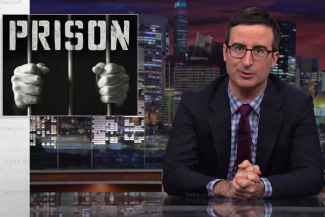 John Oliver breaks down the problems with American prisons John Oliver breaks down the problems with American prisons Tags: crime/law/deviance, inequality, political economy, prejudice/discrimination, race/ethnicity, violence, criminal justice system, incarceration, prison, prison industrial complex, racism, sexual assault, 11 to 20 mins Year: 2014 Length: 17:42 Access: YouTube Summary: In the United States, nearly 1 in every 100 adults are now in prison or jail, meaning that the U.S.incarcerates more people than those regimes Americans typically regard as repressive, such as China and Russia. Why are there so many people in American prisons? In this video from Last Week Tonight, John Oliver explains that 50% of the male prisoners in federal prisons and about 58% of female prisoners are there as a result of drug offenses. The same is true for 25.4% of all prisoners in state prisons. Given other posts on The Sociological Cinema, which explore racism in the criminal justice system (here, here and here), it may come as little surprise that a disproportionate number of prisoners are black and Latino, even when controlling for education. In fact, Human Rights Watch recently completed a study where they concluded that blacks were 10.1 times more likely to enter prison for drug offenses than whites. One result is that blacks constitute 40% of all prisoners under state jurisdiction, while whites only constitute 29% of all such prisoners. The disproportionate incarceration of blacks for drug offenses is even more striking when one considers that with the exception of crack, whites actually use more illegal drugs than blacks. The video concludes with a review of some of the deplorable conditions prisoners are now forced to endure, due in part to a move toward greater privatization. Oliver discusses the high risk of sexual assault, the small size of cells, maggot-infested food, and substandard healthcare, including an incident of pouring sugar into woman's C-section incision as a substitute for antibiotics. In another post, I have explored the fact that between 2006 and 2010, at least 148 women in California prisons were sterilized by doctors under the precepts of a eugenics ideology, a fact which underscores the desperate vulnerability of the bloated U.S. prison population. Submitted By: Lester Andrist 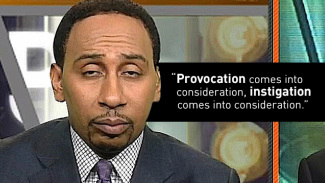 Stephen A. Smith blames the victim in an ESPN broadcast Stephen A. Smith blames the victim in an ESPN broadcast
Tags: crime/law/deviance, discourse/language, gender, inequality, media, sports, violence, assault, blaming the victim, domestic abuse, intimate partner violence, nfl, 00 to 05 mins
Year: 2014 Length: 2:15 Access: YouTube Summary: [Trigger warning for a discussion of domestic abuse and intimate partner violence] An important news story has once again put the spotlight on America's problem with domestic abuse and gender-based violence, and it involves (former) Baltimore Ravens running back Ray Rice assaulting then fiancée, Janay Palmer, in an elevator of an Atlantic City casino. Video footage of the incident confirms the couple got into a heated argument, and then somewhere during the course of the elevator's descent toward the lobby, Rice delivered a blow with enough force to seemingly render Palmer unconscious. A security camera from the lobby captures Rice dragging his fiancée's limp body out of the elevator and onto the lobby floor. Isn't this just an isolated incident of a man losing his temper? Since most men and women agree that physically assaulting another person is wrong, what is left to discuss? Here's something to consider: women are victims of rape and assault at the hands of men far more than the reverse. According to the Department of Justice, about 1 in 4 women have been victimized by an intimate partner, and this asymmetry suggests Americans still have much to discuss in terms of gendered patterns of violence. The same is true for only about 7% of all men. To be sure, there are certainly interpersonal details that led Rice and Palmer to quarrel that day, but it is no less true that Ray Rice assaulted Janay Palmer because Ray Rice lives in a society where it is sometimes permissible, and even expected, for men to enact physical violence against women. Sure, in the abstract, people agree it's wrong, but if one listens to how people actually make sense of instances of assault, it becomes clear that assault against women is only wrong with qualifications. For instance, the above video features commentator Stephen A. Smith on ESPN's "First Take" imploring viewers to "make sure we [sic] don’t do anything to provoke wrong actions.” As a sociologist, I can appreciate the importance of contextualizing social phenomena, but understanding the causal chain of events that lead to a given conflict is something different than excusing violence or saying the violence is understandable (i.e., morally acceptable). Rather than using his media platform to simply denounce Rice's behavior as wrong, Smith appears to ask his audience to consider the ways in which Janay Palmer was asking to be hit. In the spirit of truly contextualizing the abuse, Smith would do well to ask viewers to consider how a discourse of blaming the victim (also discussed here) perpetuates a state of affairs where women are the overwhelming victims of physical abuse (Note that Smith later offered an apology for his comments). Submitted by: Lester Andrist 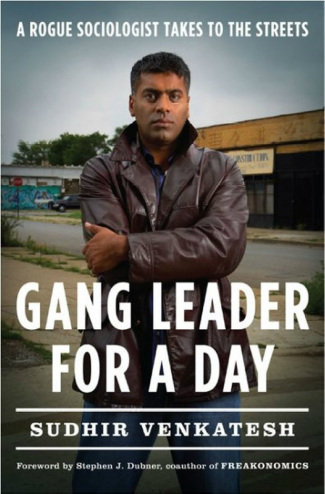 Sudhir Venkatesh's ethnography examines a Chicago gang. Sudhir Venkatesh's ethnography examines a Chicago gang. Tags: crime/law/deviance, methodology/statistics, organizations/occupations/work, prejudice/discrimination, rural/urban, ethnography, poverty, qualitative methodology, 00 to 05 mins Year: 2008 Length: 4:10 Access: YouTube Summary: In Sudhir Venkatesh's book, Gang Leader for a Day, he's billed as a "rogue sociologist," but the truth is his ethnographic method of research is anything but rogue. Sociologists have been conducting ethnographies for quite some time, as this method has long been recognized to have several distinct advantages over other research methods. In this video, which is based on the book, Venkatesh explains that he started the research by tracking down a number of gang members in a poor community and asking them questions about their everyday lives. At first, the gang believed he was a member of a rival Mexican street gang, and held him hostage for a day, before finally letting him go and ultimately agreeing to let him tag along as they went about their daily lives. The clip is useful as a rather vivid explanation of an ethnographic research design. In addition to touching on many of the distinct characteristics of ethnographic work, the clip can serve as a launching pad for discussing many of the method’s strengths. For instance, working in this tradition, Venkatesh was able to build trust with gang members, allowing him to work out a number of the details of gang life that likely would not have been disclosed in a survey or interview. Unlike other research designs, by spending a long period of time in the community the gang controlled, Venkatesh was able to bear witness and analyze emergent, often unanticipated phenomena. Similarly, the ethnographic method allowed Venkatesh to acquire more of a processual understanding of the interactions between the gang and community, and in many ways, exploded the myth that the gang’s interactions with the community were strictly coercive. As Venkatesh recounts, the gang often gave people small gifts of cash to help people get by and ultimately win their favor. As for weaknesses, while it is tempting to conclude from the video that ethnography is an inherently dangerous method, there are no protocols forcing ethnographers to choose dangerous research sites or put themselves in harm's way. Instead, the findings from ethnographies tend to be limited to the local group or population being studied. In other words, the findings often lack generalizability. Note that this is the second video on The Sociological Cinema featuring the ethnographic field work of Sudhir Venkatesh. Submitted By: Lester Andrist 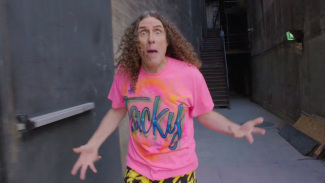 How do certain behaviors get labeled "tacky" or deviant? How do certain behaviors get labeled "tacky" or deviant? Tags: crime/law/deviance, culture, theory, labeling theory, social control, social norms, 00 to 05 mins Year: 2014 Length: 3:01 Access: YouTube Summary: In this parody of Pharrell's "Happy," Weird Al Yankovic sings about various tacky and rude behaviors. The lyrics include lines such as "It might seem crazy, wearing stripes and plaid / I instagram every meal I've had ... 43 Bumper Stickers and a YOLO license plate (because I'm tacky)." The video can serve as a fun pop culture introduction to the concepts of social norms and deviance. Social norms are informal rules that guide what people do in a particular culture. As viewers, we can identify a variety of norms implied throughout the video regarding acceptable forms of dress, conversation, decoration, inter-personal behaviors, etc. Social deviance includes any transgression of socially established norms, and Weird Al's entire song is a display of his forms of deviance, which society might label as "tacky." For example, it is considered "tacky" to wear a "belt with suspenders and sandals with my socks," it is unprofessional to print your "new resume ... in Comic Sans," and it is distasteful to take the "whole bowl of restaurant mints" (even though they are free). But viewers might go deeper by thinking more theoretically about these norms and acts of deviance. From a symbolic interactionist perspective, we might conceive of the shared meanings and assumptions of these norms as emerging from everyday interactions. Labeling theory suggests that people subconsciously notice how people react to certain behaviors and form their self-identity through such repeated reactions. There is nothing inherently deviant, or "tacky," about these behaviors, but those labels get developed through these social interactions. From a functionalist perspective, we can theorize how individuals are socialized to acquire these meanings by being integrated within social groups. The deviant acts are discouraged through a system of social control, including formal and informal sanctions (e.g. ridiculing someone for wearing sandals with my socks). These forms of control function as a system of social regulation, thereby guiding daily life and what to reasonably expect in social settings, and encouraging conformity to acceptable norms. Submitted By: Jenelle Clark  Trevor Noah describes his experience being multiracial. Trevor Noah describes his experience being multiracial. Tags: crime/law/deviance, multiculturalism, race/ethnicity, social construction, apartheid, multiracial identity, racism, stigma, 06 to 10 mins Year: 2013 Length: 8:02 Access: YouTube Summary: This clip features a set from stand-up comedian Trevor Noah's show at the Apollo Theatre in London. In his humorous commentary, Noah illustrates how meanings ascribed to race are socially constructed, and how social mechanisms--such as laws--function to create, reproduce, and reinforce socially ascribed meanings of race. Noah begins by talking about his experience growing up under apartheid, the South African law that made it illegal for white and black people to interact. Born to a black mother and white father, Noah recounts the legal consequences his parents faced for their relationship (with Noah as the evidence of that relationship and thus a liability for his parents in public). Noah also addresses the stigma he felt as a result of these very real legal dangers, offering a particularly compelling description of what the stigma felt like: "It was horrible. I felt like a bag of weed" (when his parents had to "drop" him any time authorities or would-be snitches came by). Growing up, Noah was also teased by others and called derogatory names like "mixed breed" and "half caste." Noah reflects on these names: "I hate that term 'half'. Why not 'double'?" Noah's critique highlights a common conceptualization of race, the presumption being that mixed race constitutes some form of dilution. Viewers are encouraged to take Noah's question seriously: Why is the notion of mixed race so often depicted as a "thinning" or "watering down" of some sort? Why aren't multiracial identities described as an augmentation? Pushed further, why are they presumed to constitute some type of meaningful transformation in the first place (i.e., "half" or "double")? What are the implications of such presumptions? As Noah continues to describe his own story and racialization experience, he further illustrates another dimension of the social construction of race, as race takes on different meaning in different social contexts. In South Africa, Noah longed to be considered black. He was told that, in America, people would think of him as black, as any (known) African ancestry tends to constitute "blackness" in the United States. Of course, this American racialized phenomenon has its own long legal history in the so-called "one-drop rule." Yet, upon arrival in the U.S. and much to his bewilderment, Noah is mistaken for Mexican. Here, viewers can see how race means different things in different contexts: In South Africa, Noah wanted to be "more black." In the U.S., he was told that he'd be "super black." Noah studied performances of American blackness in hopes of acquiring this super black status. However, upon arrival, Noah was deemed neither American black nor multiracial South African. Instead, he was perceived to be Mexican. The clip usefully illustrates some of the fluidity, complexity, and consequences of different racial formation systems. Submitted By: Margaret Austin Smith 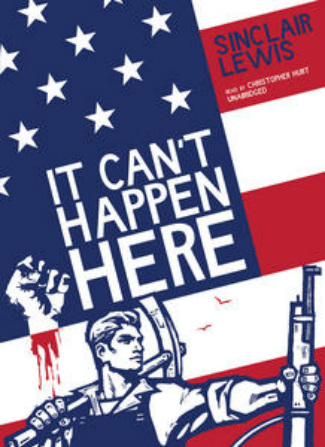 Film explores whether the US is immune to tyrannical rule. Film explores whether the US is immune to tyrannical rule. Tags: crime/law/deviance, government/the state, historical sociology, inequality, nationalism, politics/election/voting, dictatorship, domination, oligarchy, social construction of reality, tyranny, 61+ mins Year: 2013 Length: 94:23 Access: Top Documentary Films Summary: As stated on the film's website: "There are many perfect examples in our recent history which undoubtedly show that dictatorial regimes impose subjection, blackmail, servitude, intimidation, abuse, persecution and execution upon innocent people. However, many Americans are strongly convinced and assuredly assert that such a thing could never happen in the United States. But is this just desirous reasoning? Or, is there something essentially disparate about the United States that makes it resistant to the despotic abuse that has afflicted every other considerable empire in history? The primary step in scrutinizing the assertion that it can't happen here is to recognize and describe what "IT" is. Many people have distorted, almost comic-book-type, impression of dictatorship. In the real world autocracy has always crept in under the pretense of safeguarding the nation, defending the people, and establishing law and order. A dictator, in order to acquire and hold power, must demand the support of the people. An effective oppressor cannot publicly display malevolence and desire for power but must design his approach so as to persuade the people that his goals are righteous, that he wants honesty and fairness to abound, and that the most desirable way to make that true is to give him or her dominance and authority. Tyrannical governments develop by abusing people's fears - economic uncertainty, crime, foreign aggressors and so on and persuading the people that the quick-fix is for a political leader to be legally given absolute jurisdiction so he can shield the people from the wickedness of the world. This is always the pattern out of which autocracy is born. No matter how cruel or bloodthirsty regime becomes those in charge will persist to claim noble intentions and will dictate that an extreme government powers are required to protect the people and to create justice and order. Every time mankind has taken a step away from democracy and towards autocracy it was done in the name of defending the country and the people." Submitted By: Tom Sparhawk 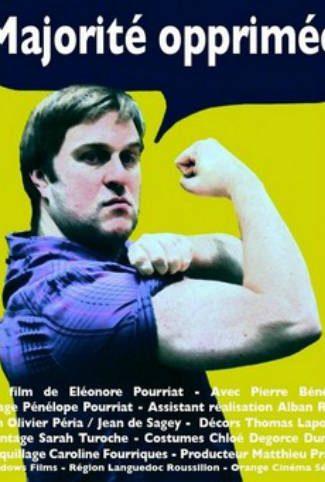 "Oppressed Majority" contemplates a matriarchal society "Oppressed Majority" contemplates a matriarchal society Tags: crime/law/deviance, culture, gender, inequality, prejudice/discrimination, violence, mircroaggression, misogyny, patriarchy, rape, rape culture, sexual violence, slut shaming, street harassment, subtitles/CC, 06 to 10 mins Year: 2014 Length: 10:59 Access: YouTube Summary: "Oppressed Majority" is a short film from Eleonore Pourriat, and it contemplates what the world would be like if men and women swapped statuses. The film's protagonist starts his day by checking the mail and politely listening to his neighbor complain about the dilapidated condition of their building. She concludes, "But I should really be talking to your wife." With this alternate French universe as her backdrop, the remark is a perfect example of the subtle brand of sexism Pourriat is able to successfully explore--what sociologists sometimes refer to as microaggressions. Later in the film, the protagonist encounters a group of young women on the street. He endures their catcalls, but when he finally stands up for himself, the women chase him into alley and rape him at knifepoint. While the obstacles confronting the protagonist as he goes about his day do not always result in physical harm, in each instance, he is the recipient of a rather vivid lesson about the place and position he and other men occupy in this fictional matriarchal society. In my view, the film works as a kind of thought experiment and confronts viewers with an unsettling question: If you're appalled by the treatment of men in this fictional society, why aren't you appalled by the ways women are treated in many real societies? For those who might object that the filmmaker is exaggerating to make her point, consider the fact that at least in the U.S. a nationally representative survey found that 87 percent of American women between the ages of 18-64 had been harassed by a male stranger; and over half of them experienced “extreme” forms of harassment including being touched, grabbed, rubbed, brushed or followed. Even more harrowing, a recent Centers for Disease Control survey calculated that 1 in 5 American women will endure a rape or attempted rape in their lifetimes. To be blunt, the film is shocking, not because it exaggerates, but because it encourages viewers to contemplate a truth. What is truly remarkable then is that people have become so numb to patriarchal aggressions; the assaults have become so normalized that it takes a work of fiction to coax people into truly seeing the society in which they live. Submitted By: Lester Andrist |
Tags
All
.
Got any videos?
Are you finding useful videos for your classes? Do you have good videos you use in your own classes? Please consider submitting your videos here and helping us build our database!
|
 RSS Feed
RSS Feed
